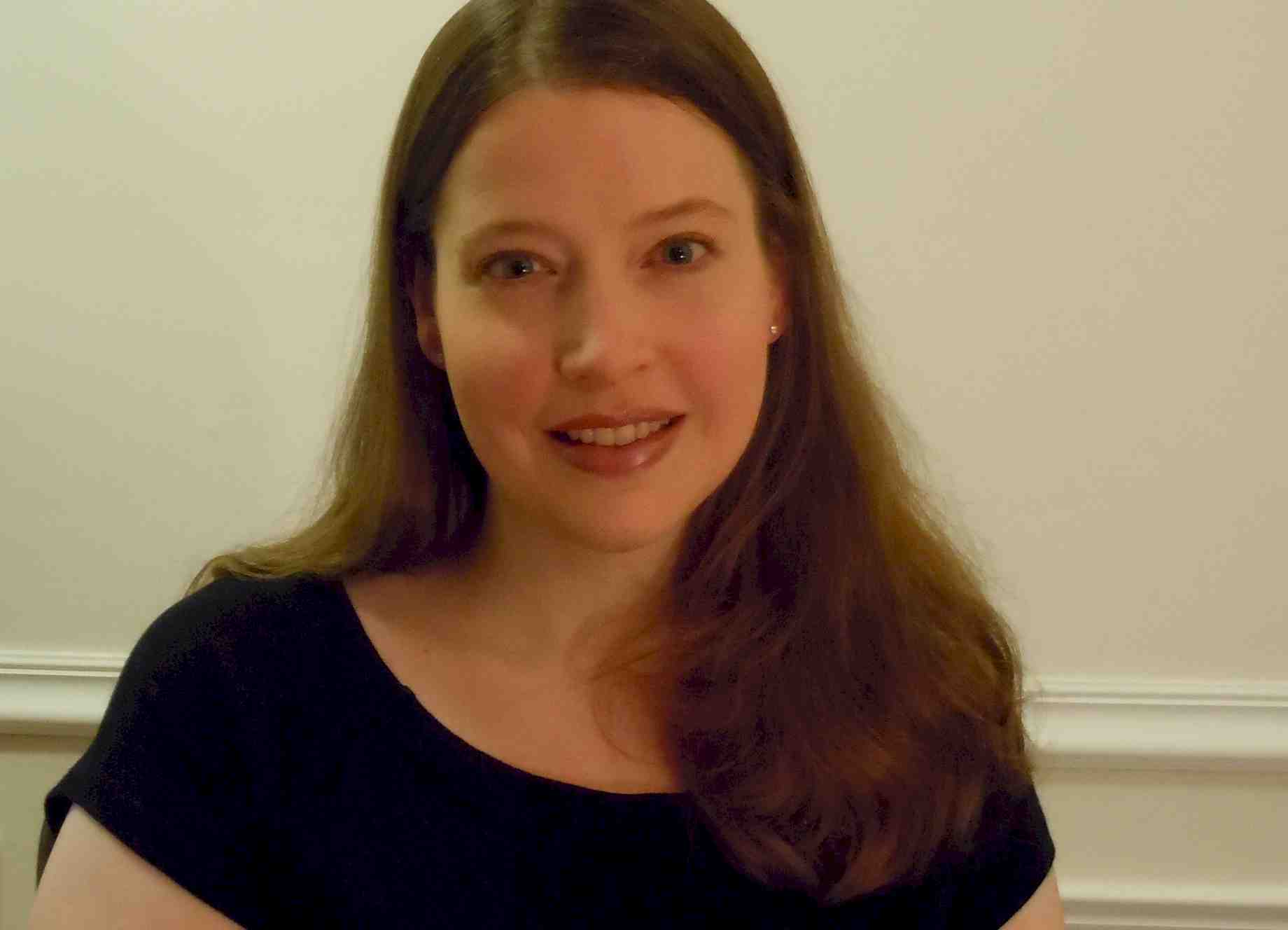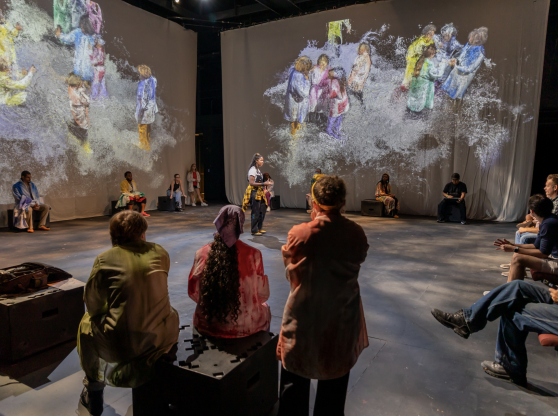Emily Bell, a UF music history alumna (Ph.D. Music ‘13), is reliving her singing career for the D.C. premiere of Lee Mingwei's month-long art installation project, Sonic Blossom, at the Smithsonian’s National Portrait Gallery. We caught up with her in a Q&A about opera, the Sonic Blossom project and her future career plans.
How did you decide to pursue opera as a career?
I'm reliving my singing career at the moment. After obtaining my Bachelor of Music degree in voice performance from Oberlin College-Conservatory of Music, I pursued a Master of Arts degree in arts administration from Florida State University. Sorry, Gators! After working for the nonprofit sector for a while, I returned to my passion for music, this time completing a Ph.D. in music history at the University of Florida. Since living in the D.C. metro area, I have been adjuncting at area colleges, but there weren't opportunities available this school year. So, I decided to pursue some auditions and, to my surprise, was accepted for these projects.
How did your studies at the University of Florida influence your career choice?
My Ph.D. program required a performance cognate, which required me to study my instrument—voice—at a graduate level. I gained great singing instruction and confidence from Dr. Elizabeth Graham. I also enjoyed participating in the opera program with Dr. Tony Offerle. This performance experience informed my research as I pursued my dissertation under the great mentorship of Dr. David Z. Kushner. I believe this sense of career diversity and collaboration has led me to be more flexible in terms of research topics and career choices.
Did you have any role models who inspired you to pursue a career in opera?
Currently, I want my career path to be diverse and fulfill different needs and focuses. When I was younger and pursuing a career in opera, I looked to Thomas Hampson and Jessye Norman as inspirations. They are both intelligent, charismatic, grounded, caring and giving singers, who do their best to engage the audience and authentically interpret the music.
Tell me about your experience as a chorister for the Annapolis Opera. How did you get involved with the Annapolis Opera?
I saw an audition announcement on the DC-Area Classical Singers Network Facebook page. I also found out about the “Sonic Blossom” project via this helpful resource. The Annapolis Opera is a wonderful company to work for. The directors are kind and professional, and the other choristers are friendly and sound great. Some choristers have worked with the company for 15-plus years, while others are newbies like me. I feel so fortunate to be a part of this opera family.
How did you feel when you found out you would be singing Schubert lieder for the D.C. premiere of Lee Mingwei's month-long art installation project, Sonic Blossom, at the Smithsonian’s National Portrait Gallery?
You'd have to ask my husband about my level of excitement and almost disbelief when I was asked to join this event. I feel honored to be a part of the Sonic Blossom project. Lee Mingwei's project was relatable for me. His inspiration came from caring for his mother after her surgery, and playing Schubert's lieder for her during her healing process. As a singer and historian, I have found great comfort and beauty in music of all genres, but even more meaningfulness in lieder, which combines beautiful and haunting German poetry with early musical Romanticism, delivered via the intimacy of solo voice and piano. I was sick for a long time, and there was a time when I was so inflamed and ill that I could not sing. As you can imagine, a singer without a voice is a heck of a predicament. However, my voice recovered, and I now feel more connected and confident in my instrument than I did before my illnesses. Lee Mingwei wants the singer to share the gift of song with museum visitors. For me, singing is about sharing and expressing one's spirit and care with others.
Can you describe your creative process for this role or performance? Is this process the same for every role or performance?
I approach this project with basically the same creative process I use for other performances. My goal is to sincerely portray the character depicted in the poetry and music. I study the German and English translations and give emphasis to the important words. As with any singer's preparation, I decide where the best places are for crescendos, descrendos, breaths, etc.
Do you have a certain goal or feeling you want observers to experience from this installation project?
I hope they are able to enjoy the sound and meaning of the experience. Whether they feel excited, peaceful, sad, reflective or happy, I want them to gain a greater sense and understanding of the comforting power of music. I want them to seek out or be open to new musical experiences.
How is Sonic Blossom different from other performances you've done in the past?
There is no accompanist present during the project. I have to sing in front of a speaker that is connected to a recording of the accompaniment. I created a recording with the accompanist in a recording studio session and the vocals were later removed. Not having a musical partner like a pianist will be a new experience for me.
What do you consider to be your greatest achievement thus far?
I'm glad to be alive! I'm especially happy if I've made someone laugh, inspired a student or friend to learn more about a particular subject or gave a sense of peace to someone in need.
What is next for you in your career?
I see myself pursuing more teaching in musical history, nonprofit and singing engagements.



